Ten poisonous plants
for horses
For most equestrians, summertime means more time outdoors for their horses.
After being cooped up in their stable over the winter months, a horse’s health and well-being will receive a massive boost from increased turnout in their pasture where they are happiest. Generally, horse owners will have an easier time of it during the summer months too, fewer daily jobs, less mud, better weather and lighter evenings for riding and turnout. However, with these benefits, it’s also the ideal time to focus on spring horse care tips to ensure your horse is healthy and safe. The frequent changing of fields also means that equestrians need to be extra vigilant in spotting and keeping horses away from plants, trees, and shrubs that are toxic to them.
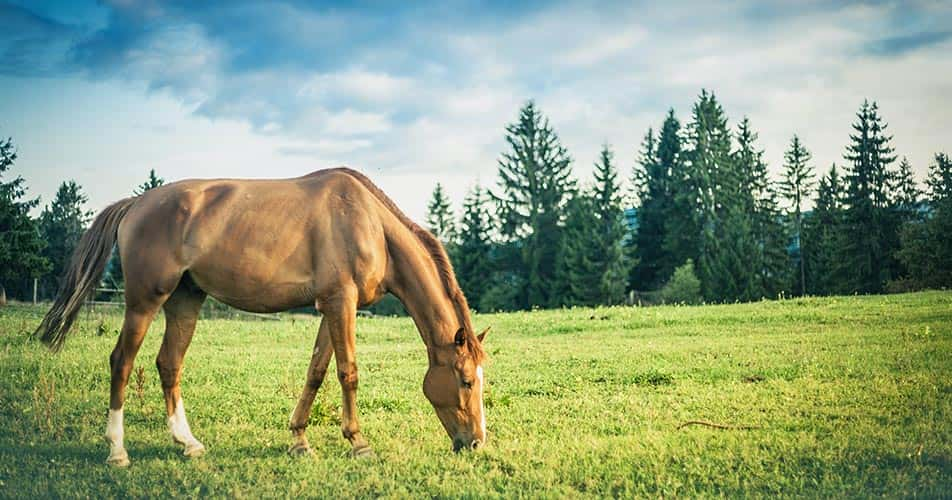
Dr Sanne Minnema MSc MRCVS at Lingfield Equine Vets explains:
The list of poisonous plants and trees for horses is extensive. The most common are ragwort, the sycamore tree, acorn, foxglove, deadly nightshade, ivy and the laburnum tree. Clinical symptoms depend on which poison has been ingested. They can range from cardiovascular symptoms like changes to heart rate, breathing difficulties and collapse to digestive signs like diarrhoea, colic and loss of appetite. Neurological signs can include dilated pupils, tremors, fits, blindness, disorientation, uncoordinated movements, drowsiness, excessive salivation, weakness, coma and death. Other symptoms can include muscle stiffness, tremors, sweating, skin irritation and brown/red urine.
We explore some of the most toxic plants you need to look out for, how to recognise them, the symptoms they cause and the steps to take if your horse is showing signs of plant poisoning. Whether you house your horses in wooden stables for sale or provide access to horse field shelters, awareness of these poisonous plants can be lifesaving.
Poisonous plants horses
should avoid eating:
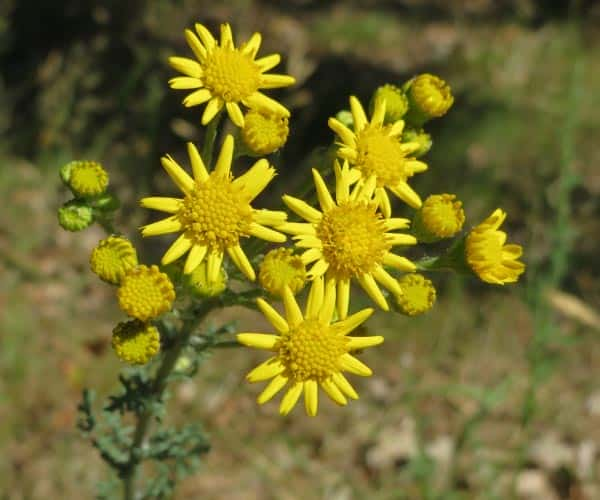
Ragwort
Ragwort is easily recognisable as a tall, erect plant that bears large, flat-topped clusters of daisy-like, yellow flowers from around June/July through to October. In gardens, ragwort can be a great food source for many insects and a bright addition to a flower-rich meadow. Although it is manageable in a garden, its ability to disperse vast numbers of seeds means that it can easily get out of control in meadows and can be extremely dangerous if consumed by horses. Ragwort produces large numbers of seeds (a single plant is capable of producing 50-60,000 seeds) which are spread by the wind and their cheery appearance means that people often do not even realise just how poisonous they are to our equine friends.
Signs of poisoning:
Once eaten, ragwort can attack a horse’s liver. One of the early symptoms is weight loss or diarrhoea (despite your horse eating normally). If detected early, the effects of ragwort poisoning can be treated, but if not, the horse may go blind and eventually collapse.
How to prevent:
Check your horse’s paddock and the surrounding areas for ragwort regularly. If you find it, dig it up at the roots and burn it. Also check your hay supply – the poison is very stable and remains toxic even when the dried plant is incorporated into hay. The most common cause of ragwort is from long-term eating of hay that includes dried ragwort so make sure your supplier is trustworthy. The British Horse Society offer some very helpful advice on the dangers of ragwort.
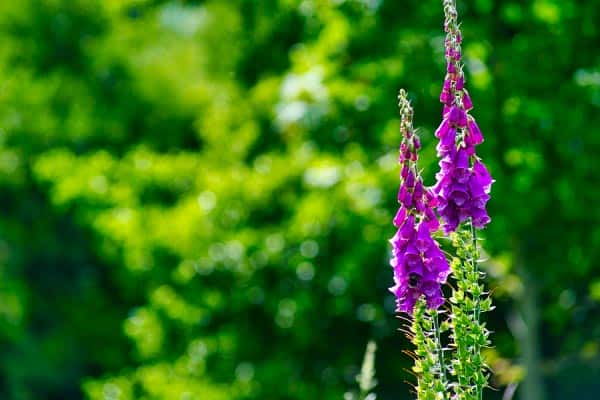
Foxglove
These beautiful wildflowers boast very distinctive bell-shaped flowers and can grow very tall, commonly reaching 1-1.5 metres. They are commonly found on pastureland and can prove fatal to horses. Although horses rarely eat them as fresh flowers as they do not enjoy the taste, they can get caught up in hay or haylage and get eaten accidentally. If you’re making homemade horse treats, be cautious about ingredients sourced from areas where foxglove is common to avoid any accidental contamination.
Signs of poisoning:
Early signs can include drowsiness, depression, convulsions, staggering, fitting, diarrhoea and breathing difficulties. Treatment and recovery will depend on how much a horse has eaten and how early a diagnosis is received.
How to prevent:
Search and remove from hay/haylage.
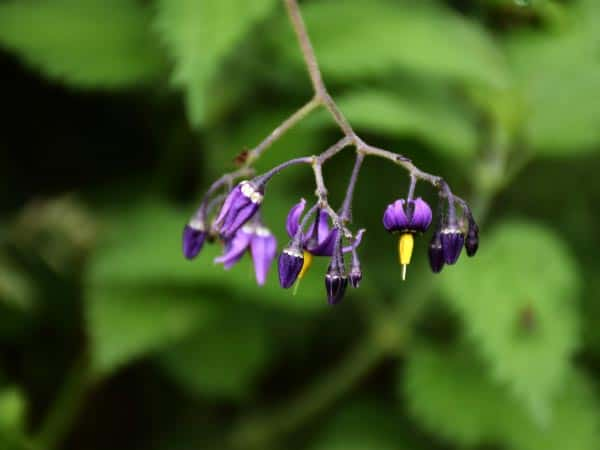
Deadly Nightshade
This wildflower is highly poisonous to horses and humans alike. Oval, pointed, pale green leaves with purple-brown flowers that appear from June, are followed by green berries in August that turn to shiny black. The cherry-like berries might be the most tempting part of Deadly Nightshade but, all parts of the plant are in fact dangerous if ingested.
Symptoms appear quickly and include blurred vision, dilated pupils, slurred speech, hallucinations, rash, headaches, unconsciousness and if left untreated, death.
Ivy
The dark green, triangular shaped leaves of this vine growing plant may look pretty but they can have some pretty nasty effects on the horses that eat them. Diarrhoea, colic, skin irritation around the mouth, loss of appetite and dehydration are to name but a few. Death from ivy poisoning is rare but not unknown and luckily, Ivy is rarely eaten as it is distasteful to horses.
Help prevent poisoning by keeping horses away from areas where ivy grows, and any ivy found should be removed.
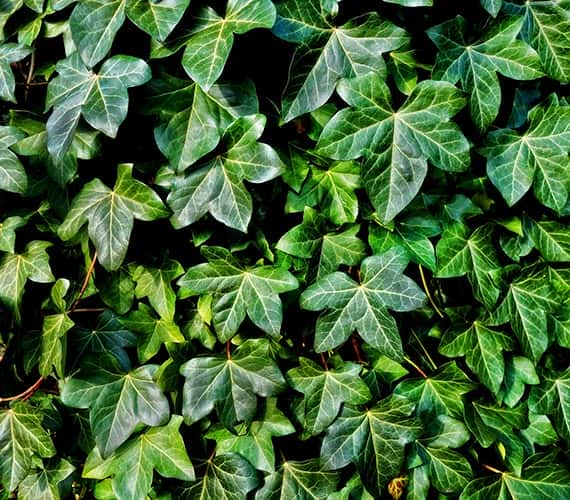
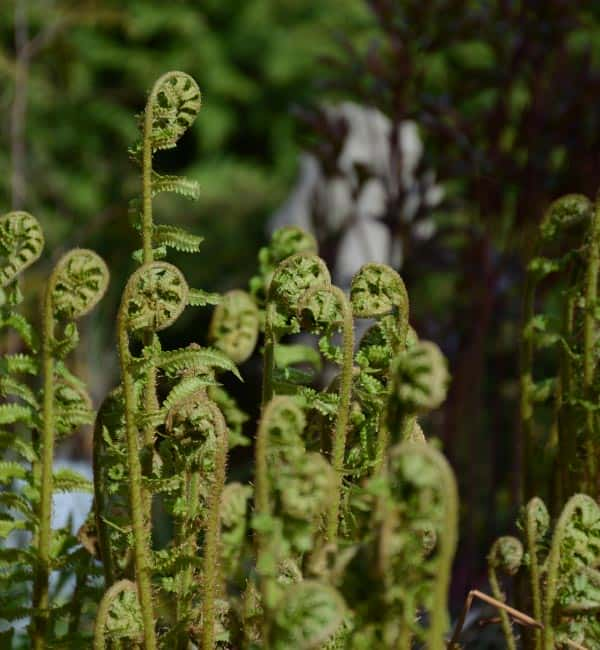
Bracken
Fern-like in appearance, Bracken is a common sight in the British countryside and can be a toughie to remove. It has thick, fleshy, underground stems that can travel long distances, often spreading into pastureland from adjacent countryside. The spores are born in the very late summer months and live on under the wide leaves. Bracken can germinate from spores carried in on the wind. Due to the vertical growth of the roots, Bracken ferns spreads rapidly and are difficult to get rid of. Bracken poisoning in horses can occur by horses ingesting all, or part of the Bracken fern, usually within the hay they are fed or when they happen to forage upon it. Luckily, the taste of Bracken is not one that horses seek out, so horses tend to avoid purposely eating the fern. However, they may resort to eating the leaves if there is little else to graze upon.
The other good news is that it is only harmful if digested in large quantities, such as ongoing feeding over a few months.
Symptoms to look out for:
Neurological signs such as nervousness, circling, staggering, muscle spasms, blindness and convulsions. It can be treated professionally if caught in the early stages.
How to prevent:
Prevent by removing from your field and by practicing good pasture management – removing weeds regularly to allow grass to grow will give your horse no reason to consume Bracken in the first place.
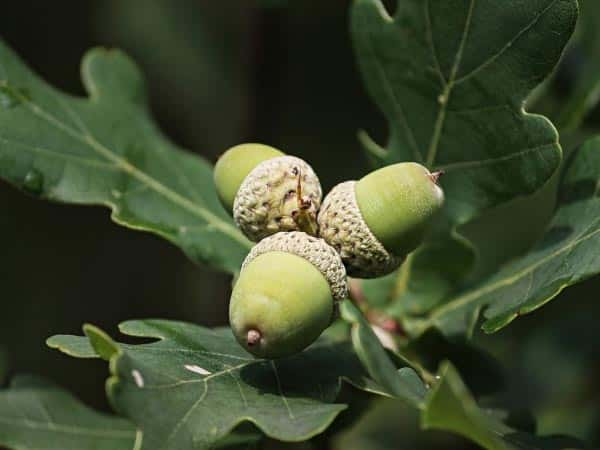
Oak Trees and Acorns
Unlike squirrels, foxes, rabbits, deer and other animals that love eating acorns for their nutritional benefits, horses will not benefit from eating them whatsoever. In fact, although horses would love to eat them, acorns can cause severe damage to the equine gastrointestinal system and kidneys. It doesn’t end there either – all parts of the oak are toxic so, ensure there are no oaks in or near the fields they are likely to graze in. Oak trees pose a particular threat to horses when they drop their acorns in the autumn – be sure to scoop up any acorns that may have found their way into the field before horses develop a taste for them.
Signs of poisoning:
Signs of oak/acorn poisoning include severe colic, weight loss, constipation, blood in the urine.
Yew Trees
It may provide fantastic shelter to woodland animals, but the Yew Tree is fatal to horses. Even fallen leaves and berries are lethal to them – so be extra vigilant at spotting any fallen leaves and berries blown into your field. Recognisable for their reddish-brown bark with purple tones and their straight, needle like leaves that grow on either side of each twig.
In spring, they grow small flowers (male species form white-yellow globe-like flowers and females are bud-like, scaley and green when young but turn brown with age). Unlike many other conifers, the common yew does not bear its seeds in a cone. Instead, each seed is enclosed in a red berry – you’ll spot these in wintertime.
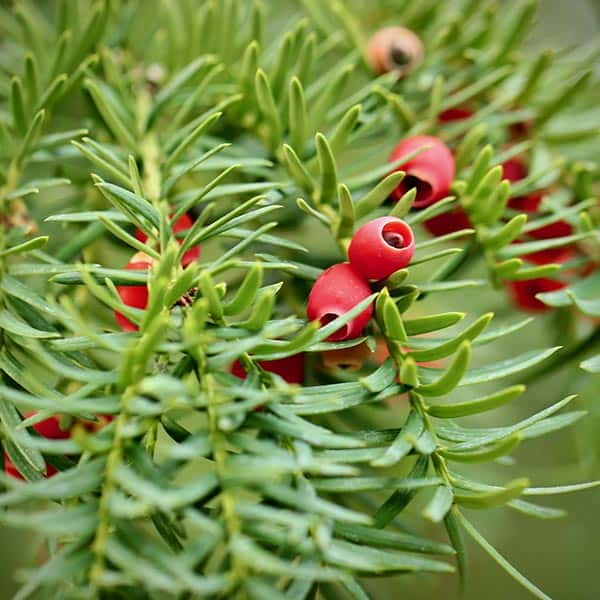
Look out for:
Yew contains the deadly toxin Taxine and can result in instant death. Neurological signs can include muscular trembling and uncoordinated movements. Sudden collapse is common and can sometimes be the only sign.
The good news is that yews are bitter tasting to horses, so they will not touch the plant unless forage is in short supply. Keep horses well away from these toxic trees and be aware that toxicity remains in clippings and dead plants.
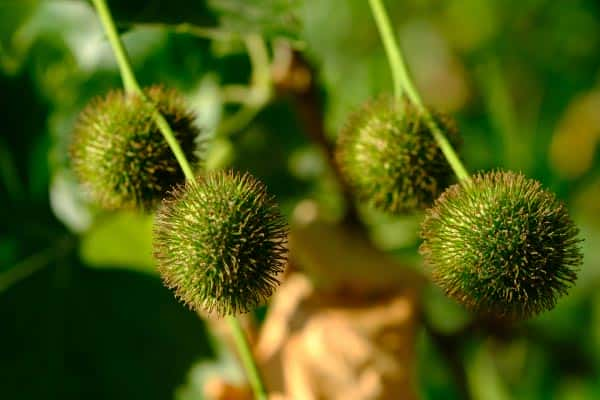
Sycamore Trees
The most important thing to mention here is Atypical Myopathy, a disease associated with horses eating sycamore seeds or seedlings. Children may love playing ‘helicopters’ with sycamore seeds but for horses they can have alarming repercussions if consumed. They have been found to contain a substance called Hypoglycin-A (HGA) which, when eaten, is converted into a toxin within the horse’s body. The toxin has a rapid negative effect and can slow or even stop energy production in the horse’s muscle fibres.
Signs of poisoning:
Signs of Atypical Myopathy include muscle stiffness and tremors, sweating, high heart rate, depression, weakness, breathing difficulties and dark urine.
How to prevent:
Help prevent consumption by removing the seeds from the pasture in the autumn, even if your pasture is nowhere near a sycamore tree, it is important to check that none have blown in from surrounding areas. Provide extra forage and maintain good pasture management.
Laburnum Trees
You will recognise the distinctive hanging yellow flowers and black seed pods of this pretty, ornamental tree, but all the parts of it are unfortunately toxic to horses. However, thanks to its bitter taste, it is not particularly palatable to horses.
Laburnum poisoning symptoms include abdominal pain, convulsions, lack of coordination and in very severe cases, coma and death.
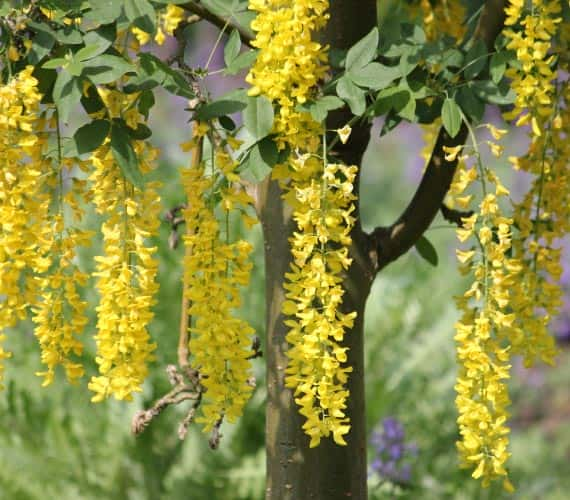
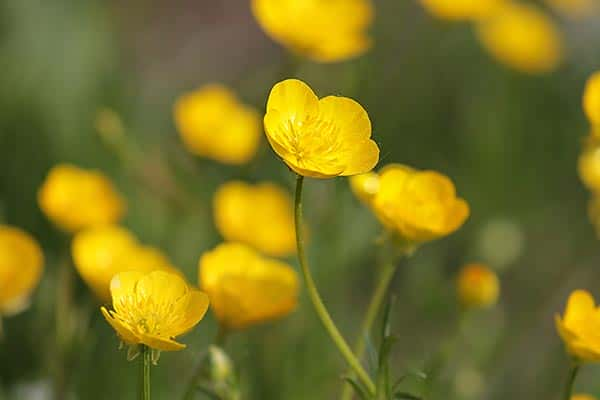
Buttercups
Another cheery, wildflower found in most meadows that is a big ‘no no’ around horses. Buttercups contain irritant juices that can cause inflammation to the stomach and the plant’s sap can cause irritation to the horse’s skin.
Symptoms to look out for:
Look out for; mouth blisters, drooling, loss of appetite, colic, twitching of the eyelids, loud breathing, bloody urine and diarrhoea.
How to prevent:
Sadly, there is no known antidote for the poison, and so pasture management is the key to prevention.
If you are concerned that your horse has been poisoned it is important to seek professional medical help as soon as possible to help limit the damage caused.
Dr Sanne Minnema MSc MRCVS at Lingfield Equine Vets advises to
stop the horse from eating any more of the poisonous plants and make sure the horse has access to fresh water. Contact your veterinarian to get more advice about how to manage your horse with information about the specific plant and poison.
Supportive care for your horse when they are recovering from poisoning is the most important thing you can do as an owner or carer. Ensure they are drinking and eating, make food appetising and possibly try sweetening drinking water with squash or apple juice. Monitor them closely until they are fully recovered.
Top tip
When handling or removing toxic plants, make sure you wear gloves and wash your hands afterwards.
Your free brochure
We make sure every prospective client has a copy of our brochure – this gives you the chance to browse examples of our products and see the quality of our workmanship. Plus, you will find details of our pricing so you can begin planning your project properly. From a stable block to a mobile stable, you will find an option to suit you perfectly.
Our brochure is 100% free of charge and is the perfect way to get your project off the ground.
Enter your postcode to request your brochure.




